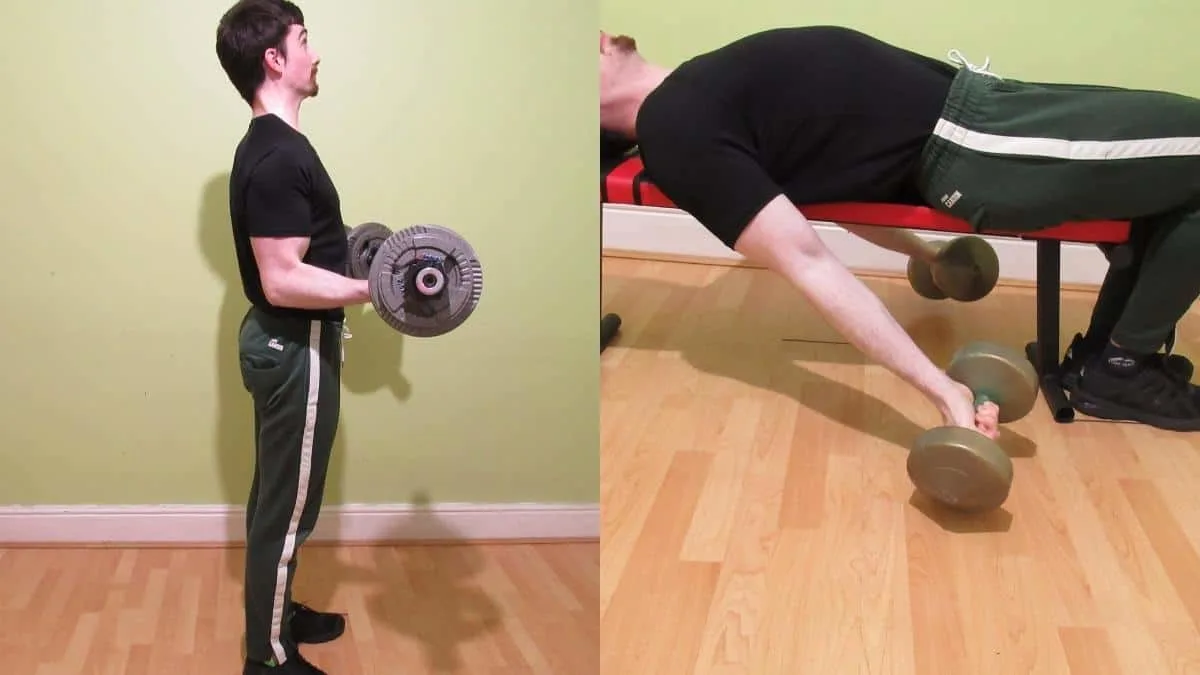Because of the anatomy of the human biceps brachii, you need to flex your elbows (i.e., curl) while your forearms are supinated to maximally work your biceps.
And although there are many good bicep workouts out there, sometimes you just need a change—a new routine to keep your training motivation high.
Or perhaps you’re recovering from an injury, and your doctor or physiotherapist has recommended that you stick to isometric bicep exercises rather than dynamic curls.
Whatever the case may be, training your arms isometrically leads to some pretty unique bicep workouts because you’ll be performing exercises that you don’t see many people doing in the gym.
Related: Isometric tricep workouts
The 7 best isometric bicep exercises
If you’re unable to do dynamic exercises, then you can just perform these isometric bicep exercises by themselves. While these static movements don’t provide the heavy eccentric loading of regular curls, they can still help you to grow and strengthen your biceps.
Alternatively, you could include a few of these isometric exercises in your regular routine to make it more challenging and to improve your mind-muscle connection. More on that in a bit.
1. Static arm curls
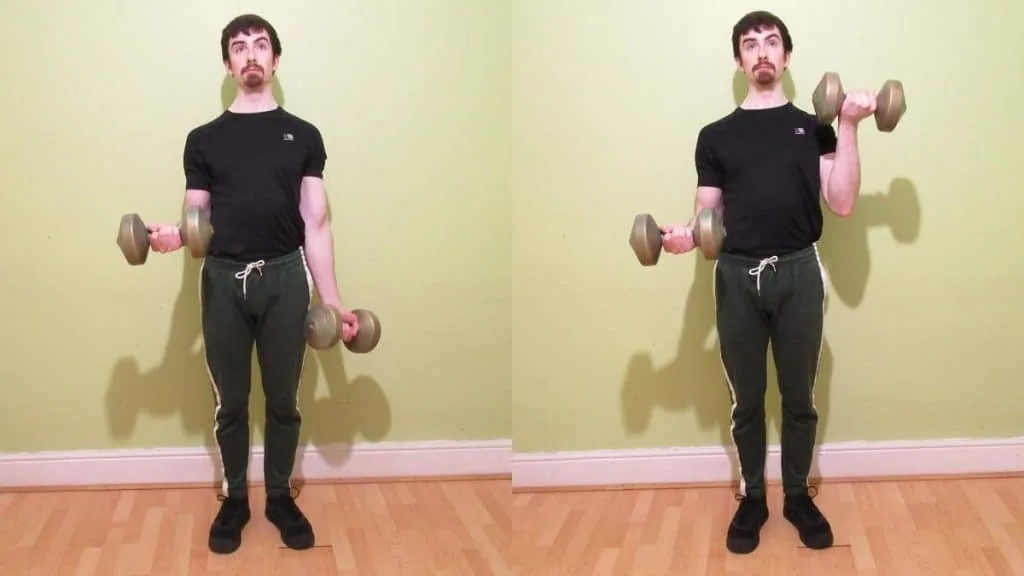
Static arm curls give your biceps the best of both worlds; challenging isometrics and muscle-building eccentric loading. Therefore, these curls are the ideal stepping stone between isometric and dynamic training, which is ideal if you’re recovering from an injury.
Yet, static arm curls are also effective for bodybuilders because they really blast your biceps.
Essentially, you hold one dumbbell isometrically while performing regular curls with the other weight. Then you switch tasks so that the arm that was working isometrically is now performing normal curls.
So as you can see, your biceps are always under some kind of tension.
Moreover, because you’re performing this isometric bicep exercise with dumbbells, you have less chance of developing muscular imbalances (than if you were using a barbell) because each arm has to work independently. This ultimately helps you to sculpt a more symmetrical physique.
- Hold a pair of weights by your sides.
- Curl one weight up—so that your elbow is at a 90-degree angle—and hold it there.
- Immediately perform 5 regular (full range of motion) curls with your other arm.
- Switch over so that the arm that was working isometrically is now doing 5 curls.
- Repeat this process two more times so that each arm has done 10 curls and two lots of 5-second holds.
- Perform 3-4 sets in total.
2. Towel holds
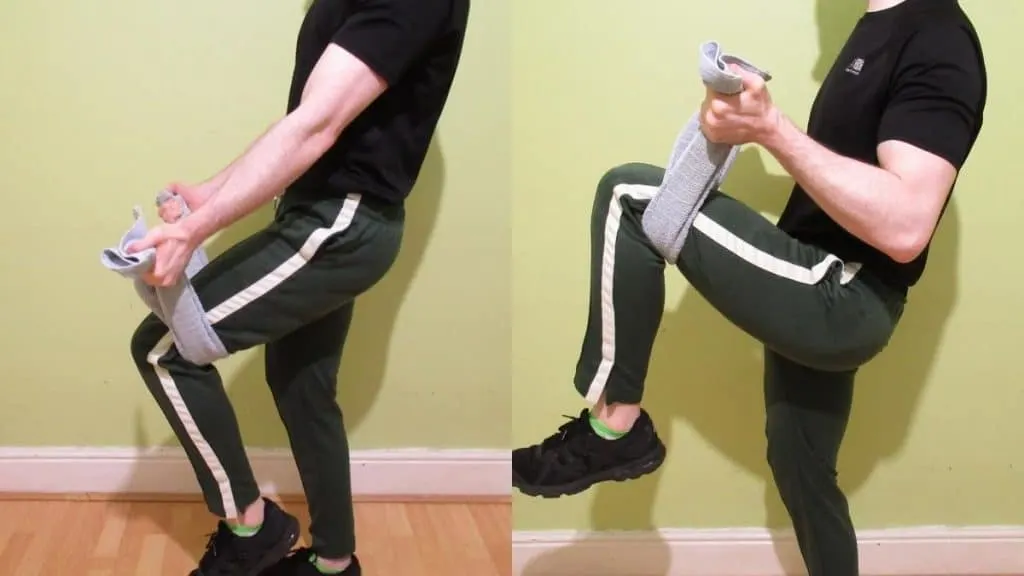
Isometric towel holds are a type of towel curl that you can do virtually anywhere (even in the shower if you want).
To perform this underrated exercise, you simply grab each end of a towel and then wrap the towel around the back of your leg. From there, you just lift your leg as high as you can so that your biceps are contracted.
The heavier that your leg is, the harder this exercise will feel. So if you’ve been skipping those squats, then you might want to wear some ankle weights to increase the resistance.
To increase the challenge still further, you could wrap the towel around your leg and then grab both ends of the towel with the same hand.
This would effectively double the resistance without you having to add actual weights around your legs and ankles. The only downside, of course, is that training each arm separately takes longer.
To see more equipment-free exercises, check out our guide to weightless bicep workouts.
- Grab a towel firmly at both ends.
- Wrap the towel around the back of your leg.
- Lift the towel as high as you can without your elbows and shoulders moving excessively.
- Hold this contracted position for 15-30 seconds.
- Repeat 3-4 more times.
3. Doorframe holds

If you have absolutely no equipment but still want to build your biceps, then you can do curls with your door in an isometric fashion.
While you might not feel tons of resistance straight away, your biceps will be burning after 30 seconds, especially if you do this drill unilaterally.
Not only will performing this isometric biceps-builder unilaterally significantly increases the burden on your biceps, but it’ll also help you to develop better muscle symmetry by ensuring that both of your arms receiving roughly equal work.
You can also time how long you can hold the doorframe for with each arm to see if you already have muscular imbalances.
Furthermore, since a doorframe is naturally harder to grip than a dumbbell, this exercise also strengthens your forearms. This is a benefit that you can increase even more by using a pinch grip (grab the doorframe between your fingers and thumb) rather than holding the doorframe with the palms of your hand.
- Stand in the middle of a doorframe.
- Turn sideways so that you’re facing one side of the doorframe.
- Grab the doorframe with one hand (two if you’re weaker) and shuffle your feet forward.
- Lean your torso back so that your elbow is fully extended.
- Pull yourself toward the doorframe by flexing your biceps.
- Keep going until your forearms press right up against your biceps.
- Hold this contracted position for 30 seconds, and then repeat with your other arm.
- Do 3-5 sets per arm.
4. Isometric chin-ups

Isometric chin-ups will let you see what your bicep muscular endurance is really made of.
It’s the most challenging isometric bicep exercise in this list because you’re lifting in excess of 90% of your body weight, a figure which you can increase by wearing a weighted vest.
The trick is to hold the top position of this iso chin-up (when your elbows are at 90 degrees) for as long as possible.
Then after this position becomes too challenging to maintain, you can let your elbows extend a bit more and then hold that new position.
You essentially keep repeating the process until your elbows are almost fully locked out.
Of course, you can also perform mini-sets of 5-15 second holds to build isometric strength more so than endurance. In this case, you’d need to perform more sets and/or use more resistance (this is where weighted vests come in handy) to compensate for the lower time under tension.
- Grab a pull-up bar with an underhand grip, just inside shoulder width.
- Pull yourself toward the bar until your elbows form a 90-degree angle.
- Hold this position for 5-15 seconds to improve your isometric strength, or hold it for as long as you can to work on your endurance more.
- Perform 3-5 sets in total (or 2 if you’re hanging on until failure).
5. Bicep curl (self-applied resistance)
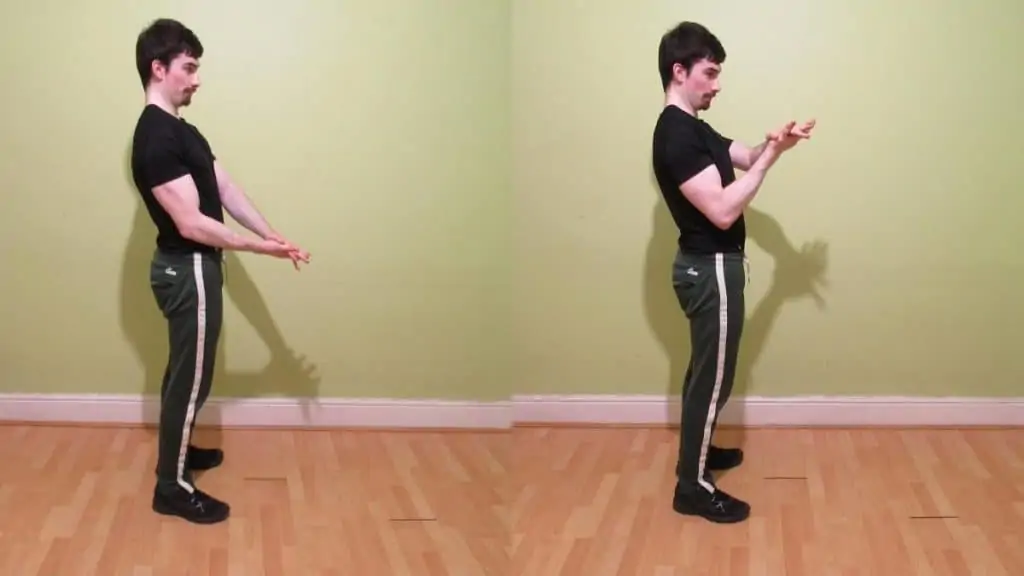
The underrated isometric bicep hold/curl is—quite literally—an exercise that you can perform absolutely anywhere and in any position. It doesn’t matter whether you’re laid in bed or chilling on the sofa; you can still perform this innovative exercise.
And the best part is that you’re in control of the resistance.
Essentially, you curl one of your arms toward your shoulder as if you were holding a dumbbell.
However, as you perform this curling motion, you simultaneously try to push your working arm back down with your spare arm.
Then on the eccentric portion of the rep, when you’d typically be lowering the dumbbell, you again try to push your working arm back up with your spare arm.
The beauty of this exercise is that you can apply as much or as little resistance as you want. You could even get your training partner involved and have them push on your hand while you focus on resisting their pressure.
- Curl one arm toward your shoulder while simultaneously trying to push it back down with your other arm.
- Squeeze your biceps at the top of the rep and hold the contraction for a second.
- Lower your hand back down to your sides while simultaneously trying to push it back up with your spare arm.
- Switch arms and repeat.
- Perform 3-5 sets of 8-15 reps per arm.
6. Lying dumbbell curl

All of the exercises thus far have focused on the contraction part of the rep.
Now it’s time for a different challenge.
The lying dumbbell curl produces the strongest eccentric muscle stretch of any bicep movement. It really breaks down the muscle fibers and gives you the DOMS to prove it.
So by combining lying dumbbell curls with the other isometric bicep exercises, you’ll be optimizing your results by working your muscles from a greater variety of angles.
Again, you can hold the stretch for as long as you want, or you can perform multiple mini sets. The first approach is obviously more challenging, but since you’re holding on until failure, you can get great results from just 1-2 sets, so your workouts might be a bit shorter.
- Grab a pair of relatively light weights.
- Lie back on a flat bench.
- Let your arms hang over either side of the bench so that your elbows are fully extended.
- Hold this position for 15-30 seconds.
- Repeat for a total of 3-5 sets.
7. Isometric buddy curls

Buddy bicep curls are a fun, competitive, and, above all, intense way to finish off your biceps after a hard workout.
But have you ever considered performing buddy curls isometrically?
The premise is the same. You and your training partner start with a five-second isometric hold and then work your way up to 20 seconds, 30 seconds, or however long you can both last.
Just make sure to do this with someone of similar size and strength so that you can both get a good workout. You don’t want your training partner’s arms to fatigue way before yours because then your biceps would be left understimulated (unless, of course, you just did some extra isometrics by yourself).
- Curl a barbell halfway up so that your elbows are at 90 degrees.
- Hold the contraction for 5 seconds.
- Pass the bar to your training partner and have them do the same.
- Take the bar back from him and hold the same position for six seconds.
- Repeat this process until you’ve held the bar for the desired amount of time or until you reach failure.
- Perform 2-4 rounds in total.
A full isometric bicep workout
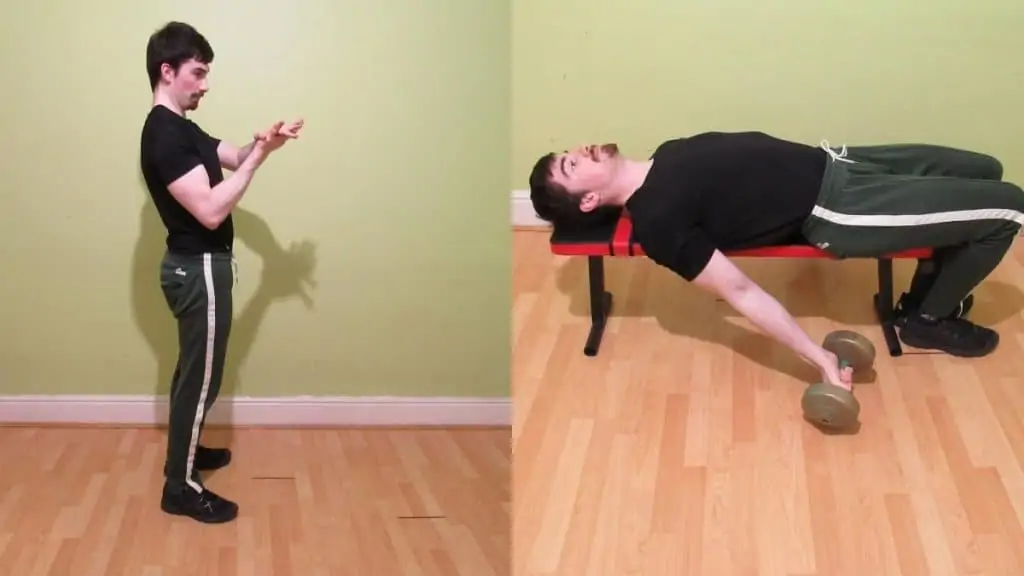
1: Static arm curls — 3-4 sets of 10 reps (per arm)
2: Curls (self-applied resistance) — 3-4 sets of 12-15 reps
3: Towel holds — 3-4 sets of 15-30-second holds
4: Lying dumbbell curl/stretch — 3-4 sets of 20-40-second holds
5: Isometric chin-up — 2 sets to failure
This isometric bicep workout attacks your arms from multiple angles and with a variety of training techniques.
First up are static arm curls. This isometric bicep exercise also includes dynamic curling so that you can give your biceps a tremendous stretch as well as an intense contraction.
Then it’s onto curls using self-applied resistance. This movement mimics dumbbell curls, and you can do it with any hand position. For example, to focus primarily on your biceps, perform the exercise with your palms facing up. Conversely, you can curl with your palms facing down to shift the emphasis onto your brachialis and brachioradialis instead.
Now it’s time for pure isometrics. Towel curls will help to improve your mind-muscle connection by having you contract your biceps for a prolonged period of time.
Similarly, the lying dumbbell stretch challenges your biceps isometrically when they’re in a lengthened position so that you can develop greater eccentric muscle strength.
Isometric chin-ups are the final exercise, and one which will ensure that you’re biceps are thoroughly fatigued and primed for growth. It’s recommended to stick to 1-2 sets here because you’re training failure and thus creating a lot of muscle damage. You don’t want to impede your recovery by doing too many sets when you’re training so intensely.
The benefits of performing isometric bicep exercises
While most people perform dynamic exercises (drills that have a concentric and eccentric component to them), isometric training still has its place.
As mentioned, isometrics are useful for injury rehabilitation and general muscle strengthening since they’re easier and safer than dynamic exercises. This is because dynamic movements, while safe when performed correctly, still train your muscles at the extremes of the range of motion.
Enhanced mind-muscle connection
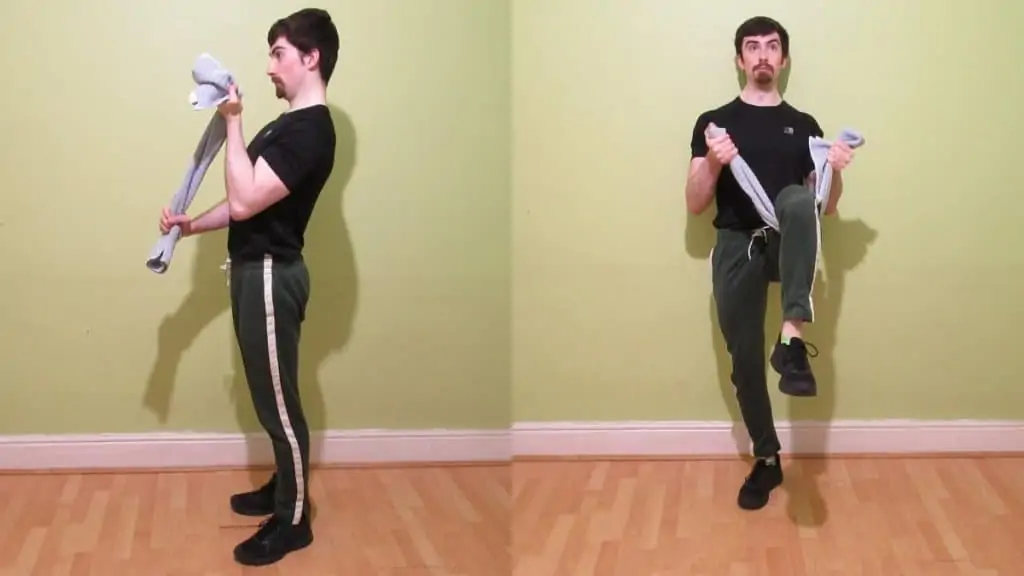
Having a solid mind-muscle connection enables you to get more from every set by placing greater amounts of tension on the working muscles, in our case, on the biceps.
Performing a full range of motion is very important for maximizing hypertrophy (hence why isometrics alone aren’t ideal). And one of the requirements for getting a full range of motion is to achieve a proper contraction.
So by holding the top part of a curl or chin-up for an extended period of time (anywhere from 5-30 seconds), you’ll be improving your isometric strength, which in turn will enable you to get more from your regular, dynamic exercises since you’ll now be able to contract your biceps harder.
If you’re a competitive bodybuilder (or if you just like to flex your arms a lot), then enhancing your mind-muscle connection via isometric bicep holds will also improve your posing, specifically your ability to maintain front and back double bicep poses.
Improved muscular endurance

While you might not care amount having good muscular endurance if you’re a bodybuilder, you actually should.
Having reliable endurance and good lactic acid tolerance will enable you to perform more reps per set and thereby accumulate more total training volume over the week. This is significant because doing enough training volume, after all, is the main stimulus of muscle growth.
Performing prolonged isometrics for your biceps also helps to target the fatigue-resistant slow-twitch muscle fibers. While these fibers don’t grow as big as their fast-twitch counterparts, they’re nonetheless still crucial for maximizing hypertrophy.
More muscle growth

It’s unlikely that isometrics build more muscle (or even as much muscle) as dynamic exercises. This is because dynamic movements consist of both a concentric and eccentric component and thus train your biceps over a full range of motion, thereby stimulating a broader range of muscle fibers.
Yet, you can use isometrics as an intensity technique during your regular workouts to apply a novel stimulus to your biceps and potentially trigger new muscle growth.
For example, rather than briefly contracting your biceps and then lowering the weight during curls, you could hold the peak contraction for three seconds on each rep. Doing this would increase the time under tension and, because of that, potentially also stimulate greater hypertrophy.
On the other hand, if you’re new to lifting weights, then performing isometrics alone is more than enough to get your biceps growing. This is because the stimulus of heavy resistance is so novel to your biceps that they have no choice but to become stronger and larger.
In conclusion
Isometric bicep exercises are commonly prescribed by physiotherapists so that their patients can ease themselves into resistance training and strengthen their arm muscles.
In this regard, performing isometrics for your biceps is helpful because the strength that you develop will carry over into everyday life, whether that be lifting grocery bags or lifting heavy cooking pans in the kitchen.
Isometric movements are also excellent for adding variety and intensity to your regular workouts. It can be fun to see how long you can hold a dumbbell for, and isometrics, when performed consistently, can also trigger new muscle growth by helping you to accumulate extra volume over the course of the session, week, and training cycle.
References
- Lum, D., & Barbosa, T. M. (2019). Brief Review: Effects of Isometric Strength Training on Strength and Dynamic Performance. International Journal of Sports Medicine, 40(06), 363–375. https://doi.org/10.1055/a-0863-4539
- Carter, P. (2019, August 18). Mastering the Mind-Muscle Connection. T NATION. https://www.t-nation.com/training/mastering-the-mind-muscle-connection/
- Lee, B. C. Y., & McGill, S. M. (2015). Effect of Long-term Isometric Training on Core/Torso Stiffness. Journal of Strength and Conditioning Research, 29(6), 1515–1526. https://doi.org/10.1519/jsc.0000000000000740

